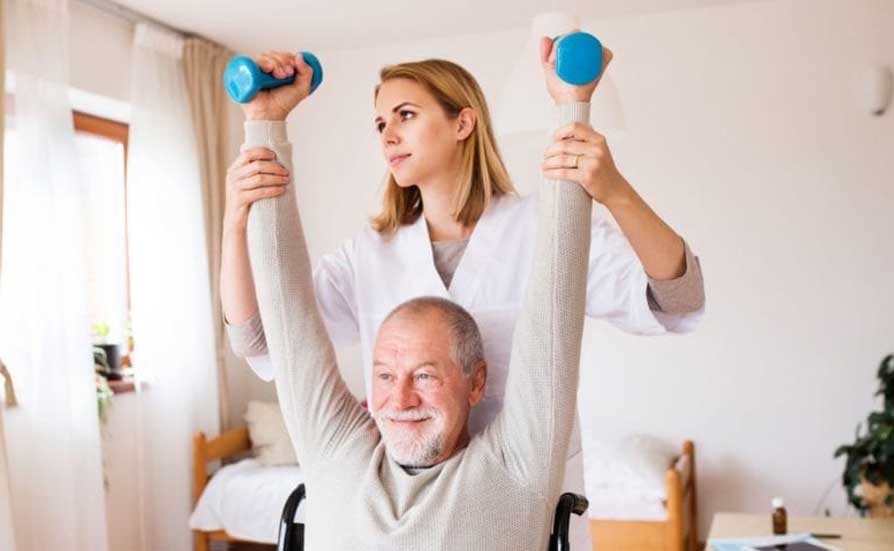
What Are the Benefits of In-Home Physical Therapy?
February 5, 2021
Treating COVID Symptoms in Hospice
February 10, 2021How Physical Therapy Helps Seniors
How physical therapy at home helps seniors stay strong and independent
Accidents and injuries are serious obstacles to a person’s independence—no matter how old they are. While most of us bounce back from a bad fall, for seniors the recovery process is much more challenging.
Thankfully, setbacks can be reversed—even amongst the elderly—with physical therapy. With exercise and proper instruction, seniors can rebuild their strength, endurance, and mobility in order to live on their own terms…especially if physical therapy happens at home.

Why rehabilitate at home?
Physical therapy helps seniors improve the five components of physical fitness: strength, flexibility, coordination, endurance, and range of motion. Each one overlaps, so therapists try to combine as many as they can into exercise routines.
In-home physical therapy helps seniors focus on the obstacles they face day-to-day, including ongoing challenges like getting upstairs or showering. Once therapists can see what their patients are struggling with, they can tailor their recovery routines to help deliver measurable results.
In general, seniors are more likely to push themselves when they can measure their progress in practical terms. Therapists understand that independence builds as confidence grows, so all exercises are performed under close supervision. If there is an activity patients can’t perform safely, therapists guide them step-by-step until they can. Once they trust their own abilities, it becomes easier to progress to more challenging activities, including resuming their regular, pre-injury routines.
Doing in-home therapy also gives therapists a chance to learn about the patient from their immediate family members, especially what their abilities were before the accident or injury. The family’s input helps therapists set goals that will make the patient as free and functional as possible.
Increasing strength and mobility in familiar spaces
Strong muscles and flexible joints are essential for basic movement. Flexible joints make it easy for seniors to maintain good posture. In most cases, a basic stretching program keeps muscles elastic and can be easily performed in a home setting. Therapists prefer simple exercises whenever possible because it is easy for seniors to continue them on their own.
Exercises for each section of the body are performed in sets that can be done standing or sitting. In-home therapists always have props on hand as well, to add resistance and make workouts more effective. They may start seniors with a simple leg kick or seated march, then add an ankle weight or elastic band to challenge patients a little further.
Movement is less difficult when muscles work together. With this in mind, therapists look for activities that stimulate several muscle groups at once, including indoors and outdoors. Games like catch and cornhole help increase strength and coordination; tapping colored targets on the floor or walking in a certain pattern are just as effective for patients rehabilitating indoors.
Endurance exercises are another simple way for seniors to improve stamina and perform a wider range of activities. Therapists normally ask patients to do longer repetitions of familiar actions, like walking, but anything that increases the heart rate helps, including seated and supine actions. Regardless of the level of activity, to prevent overstraining, therapists always monitor the patient’s vitals during workout sessions.

